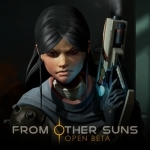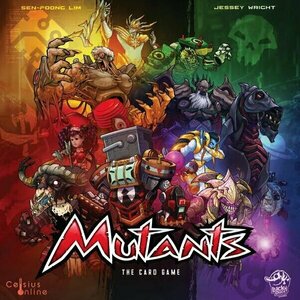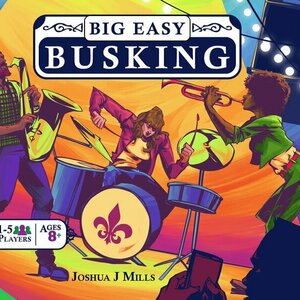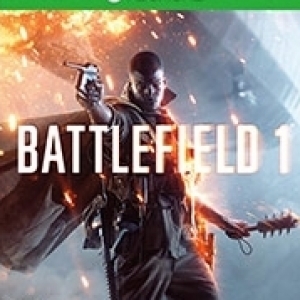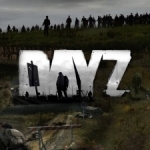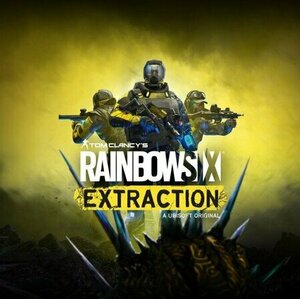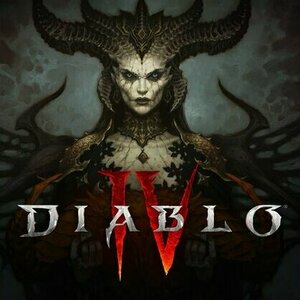Search
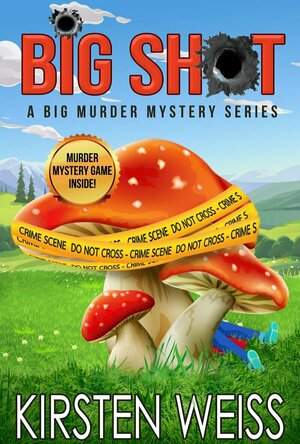
Big Shot (A Big Murder Mystery #1) by Kirsten Weiss
Book
Small Town. Big Murder. The number one secret to my success as a bodyguard? Staying under the...
Cozy Mystery
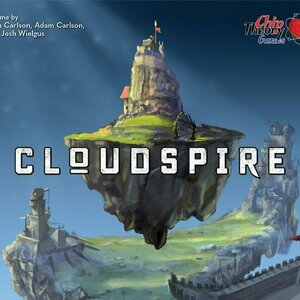
Cloudspire
Tabletop Game
Cloudspire is 1-4 player strategy game heavily influenced by both tower defense and MOBA...
Purple Phoenix Games (2266 KP) rated Big Easy Busking in Tabletop Games
Sep 15, 2020
Ahh New Orleans. If there ever was a city I NEED to revisit, it’s New Orleans. I love nearly everything about it. The history, the art and music, the architecture, and strolling down Frenchman Street at night listening to the hottest music I’ve ever heard live. But what is it like to BE a musician in NOLA? Or even a group’s manager? Well, I’ve never played in New Orleans (I am a professional trumpet player – don’t belive me? Check out the last photo in this review to see my axe and the box as proof), but I can imagine how it would go. Does Big Easy Busking capture the feeling? Let’s find out together.
Big Easy Busking is a card-based area control game with a sweet sweet music theme. Players will be taking turns learning charts, playing charts, and transferring energy from the musicians to the crowd and back. The winner of Big Easy Busking is the player who can score the biggest haul in tips for the weekend to become the hottest band in town.
DISCLAIMER: We were provided a copy of this game for the purposes of this review. This is a retail copy of the game, so what you see in these photos is exactly what would be received in your box. I do not intend to cover every single rule included in the rulebook, but will describe the overall game flow and major rule set so that our readers may get a sense of how the game plays. For more in depth rules, you may purchase a copy online or from your FLGS. -T
To setup, two “streets” in New Orleans will need to be populated with song cards, both standards and learnable tunes. Crowd cards will be placed under the streets to depict certain crowds and what the moods of those crowds are. Each player will receive some starting bread (money for those not in the biz), energy for their 3-piece band of sax, trumpet, and drums, a starting set list of three tunes, and a reference card that has nothing to do with the metaphor. Decide who can play the highest note (if you are all trumpet players) and the gig may begin!
A turn is broken down into a few different parts. The first thing to be done on a turn is to finish playing the song that had been started in the previous round. Obviously you need to START playing a song to be able to finish, so the primary phase of the turn would be to either learn a song from the song offer or start playing a song from those dealt during setup. To play a song, players will choose a song card, place it under a crowd card (hopefully matching their mood: masks, hearts, beads, fleur-de-lis), gather the required energy from the musicians appropriately, and add those energy cubes to the song card.
After a song is started or learned, the player’s turn is over. On the next turn the player will finish playing the song by moving the spent energy to the crowd in full and taking $1 or moving some of the energy to the crowd and some back to their band members to be used on future songs.
The middle step in a turn (yes, I know I am explaining it out of order, but you do have to start playing a song before you can finish it) is to optionally tip your band members by trading in money for energy at a 1:1 ratio.
Once all players have used up their energy cubes or simply wish to, they will announce that they are “taking a break.” In other words, they pass for the remainder of the round. As the last player takes their break the end of round activities begin. Printed on each crowd card are two important icons: payout amounts for majority of energy and payout amounts for energy reaching the threshold. Resolving each crowd card will determine the players that hold majority or shared majority in each crowd location. For the majority holders payouts will reflect what is printed on the upper left of the crowd card. The upper right of the crowd card displays the number of energy needed upon it to meet the threshold in order to be paid the amount shown. When all crowd cards have been scored players will setup for the next night (round) per the rules. Play continues in this way over three rounds with the winner being the player at the end of the game with the most money.
Components. This is a smaller box (not exactly the same size, but think Tiny Epic), but it is packed with some really amazing bits. First off, as you can tell from the photos the art and color palette used here is simply phenomenal. I absolutely love the color scheme and the art certainly reminds me of some paintings we purchased from an artist on Jackson Square last time we were able to visit. The cards are nice, but I think I will want to sleeve them eventually as I had them in my hands the whole game. The cardboard money and mood tokens are fine, and the wooden cubes reflect the colorful nature of this little gem. All in all, exactly what I would expect from components in a Weird Giraffe Games production. Stellar (see what I did there, Carla?).
I have not really enjoyed a ton of area control games in my gaming history. So this came as a little bit of a shock as I truly loved playing this game. Even the solo rules are engaging and DIFFICULT to win. I came close though – within $1. The game is super quick as you are trying to please the crowds and their distinct moods with your best charts, but having to be mindful of not overextending your musicians lest they be too exhausted to give you the gas when you need it. THAT part resonates with me personally. Being a musician myself, I can tell you that crowds that are into a tune or a band and give them all the energy they have will be rewarded with even more from the band. I definitely give it more when the crowd digs what we’re laying down.
In any case, this is a game review, not a nostalgic trip down my musical memory lane. But then again, a little card game just brought me back wonderful memories of my band, and of visiting New Orleans, and of the joy of live music. Does Big Easy Busking completely mimic what it’s like to be a musician? Well, no, I can’t imagine how any game truly could, but it certainly shows the cyclical nature of energy being exchanged between musicians and appreciative crowds. Oh, the names of the tunes are also pretty funny on some. This all said, I super love this game and will be kicking out something in my collection to make room for it. If you are needing a smaller card game that you can bring out with musicians or non-musicians that appreciate the theme but also want to start introducing area control in a more accessible form, please do check out Big Easy Busking. Purple Phoenix Games gives it a good-for-the-soul 10 / 12. Maybe once I get into video I will do a Dan King (Game Boy Geek) serenade for Big Easy Busking as it travels into my collection.
Big Easy Busking is a card-based area control game with a sweet sweet music theme. Players will be taking turns learning charts, playing charts, and transferring energy from the musicians to the crowd and back. The winner of Big Easy Busking is the player who can score the biggest haul in tips for the weekend to become the hottest band in town.
DISCLAIMER: We were provided a copy of this game for the purposes of this review. This is a retail copy of the game, so what you see in these photos is exactly what would be received in your box. I do not intend to cover every single rule included in the rulebook, but will describe the overall game flow and major rule set so that our readers may get a sense of how the game plays. For more in depth rules, you may purchase a copy online or from your FLGS. -T
To setup, two “streets” in New Orleans will need to be populated with song cards, both standards and learnable tunes. Crowd cards will be placed under the streets to depict certain crowds and what the moods of those crowds are. Each player will receive some starting bread (money for those not in the biz), energy for their 3-piece band of sax, trumpet, and drums, a starting set list of three tunes, and a reference card that has nothing to do with the metaphor. Decide who can play the highest note (if you are all trumpet players) and the gig may begin!
A turn is broken down into a few different parts. The first thing to be done on a turn is to finish playing the song that had been started in the previous round. Obviously you need to START playing a song to be able to finish, so the primary phase of the turn would be to either learn a song from the song offer or start playing a song from those dealt during setup. To play a song, players will choose a song card, place it under a crowd card (hopefully matching their mood: masks, hearts, beads, fleur-de-lis), gather the required energy from the musicians appropriately, and add those energy cubes to the song card.
After a song is started or learned, the player’s turn is over. On the next turn the player will finish playing the song by moving the spent energy to the crowd in full and taking $1 or moving some of the energy to the crowd and some back to their band members to be used on future songs.
The middle step in a turn (yes, I know I am explaining it out of order, but you do have to start playing a song before you can finish it) is to optionally tip your band members by trading in money for energy at a 1:1 ratio.
Once all players have used up their energy cubes or simply wish to, they will announce that they are “taking a break.” In other words, they pass for the remainder of the round. As the last player takes their break the end of round activities begin. Printed on each crowd card are two important icons: payout amounts for majority of energy and payout amounts for energy reaching the threshold. Resolving each crowd card will determine the players that hold majority or shared majority in each crowd location. For the majority holders payouts will reflect what is printed on the upper left of the crowd card. The upper right of the crowd card displays the number of energy needed upon it to meet the threshold in order to be paid the amount shown. When all crowd cards have been scored players will setup for the next night (round) per the rules. Play continues in this way over three rounds with the winner being the player at the end of the game with the most money.
Components. This is a smaller box (not exactly the same size, but think Tiny Epic), but it is packed with some really amazing bits. First off, as you can tell from the photos the art and color palette used here is simply phenomenal. I absolutely love the color scheme and the art certainly reminds me of some paintings we purchased from an artist on Jackson Square last time we were able to visit. The cards are nice, but I think I will want to sleeve them eventually as I had them in my hands the whole game. The cardboard money and mood tokens are fine, and the wooden cubes reflect the colorful nature of this little gem. All in all, exactly what I would expect from components in a Weird Giraffe Games production. Stellar (see what I did there, Carla?).
I have not really enjoyed a ton of area control games in my gaming history. So this came as a little bit of a shock as I truly loved playing this game. Even the solo rules are engaging and DIFFICULT to win. I came close though – within $1. The game is super quick as you are trying to please the crowds and their distinct moods with your best charts, but having to be mindful of not overextending your musicians lest they be too exhausted to give you the gas when you need it. THAT part resonates with me personally. Being a musician myself, I can tell you that crowds that are into a tune or a band and give them all the energy they have will be rewarded with even more from the band. I definitely give it more when the crowd digs what we’re laying down.
In any case, this is a game review, not a nostalgic trip down my musical memory lane. But then again, a little card game just brought me back wonderful memories of my band, and of visiting New Orleans, and of the joy of live music. Does Big Easy Busking completely mimic what it’s like to be a musician? Well, no, I can’t imagine how any game truly could, but it certainly shows the cyclical nature of energy being exchanged between musicians and appreciative crowds. Oh, the names of the tunes are also pretty funny on some. This all said, I super love this game and will be kicking out something in my collection to make room for it. If you are needing a smaller card game that you can bring out with musicians or non-musicians that appreciate the theme but also want to start introducing area control in a more accessible form, please do check out Big Easy Busking. Purple Phoenix Games gives it a good-for-the-soul 10 / 12. Maybe once I get into video I will do a Dan King (Game Boy Geek) serenade for Big Easy Busking as it travels into my collection.
Gareth von Kallenbach (980 KP) rated the PC version of Battlefield 1 in Video Games
Jun 19, 2019
Electronic Arts and Dice have crafted a thrilling entry into the Battlefield series with the World War I themed Battlefield 1. The visually stunning game is dripping with authenticity which is seen in every frame of the game. The weapons, uniforms, vehicles, tactics, and technology as a historians dream brought to life.
Players to take part in the solo campaigns find themselves reliving various battles from the point of those who participated in them. There is a tank mission behind enemy lines in Europe, a battle in the Italian mountainside, a thrilling aerial scenario, a very intense and emotional story set against the battle of Gallipoli, and a thrilling desert adventure featuring Lawrence of Arabia himself.
One of the great things about the game is that it takes modern gameplay tactics such as trying to secure an objective or defeat enemy units and infuses it with a sense of the past. Weapons are slow to load, are not always the most accurate at a distance, and have a crudeness about them that is refreshing in this era of games featuring advanced weaponry and technology. This does require a bit of a learning curve as there have been times where I would unload a full magazine on an enemy player and multiplayer mode only to see them survive and dispatch me with one or two shots from pistol. Once you start to get the way the weapons work and develop strategies to work within their strengths and limitations, you’ll soon find yourself able to make solid progress in the game.
The solo play campaigns allow players to set a difficulty that is best suited for their style of play and have very interesting and gripping narratives.
Many players will keep their focus on the multiplayer portion which has campaign objectives as well as quick matches. This does take a bit of learning as the landscapes are large and there are plenty of places for players with higher grade weapons to pick up new players before they even know an enemy is near. Naturally your weaponry choices to get better as your on-field accomplishments merit them it is also important to note that due to the vast landscapes littered with foxholes, trenches, villages, and other locales, wide open areas where players are very exposed and vulnerable are numerous.
Getting a tank often seems like a big accomplishment but when you realize that the vehicle is slow to turn it is a sitting duck for enemy artillery, explosives, and other tanks. Strategy and teamwork are vital to the success of any mission especially when players can move up and bring in one of the massive zeppelins into the battle. I really enjoyed flying the planes of the era but had to remember that there reduced speed made it very difficult turn especially for somebody who was used to strafing a target, flying into the distance, making a wide turn, and then attacking again. I found myself that many times with the leaving the battlefield warning and was not able to turn fast enough to get myself back where I needed to be.
As somebody who studied history extensively in college, it was amazing to get a sense of the war the on the pages of history books and learn how in this era of new technology such as planes, tanks, gas, machine guns, Zeppelins, and more, the capacity to do devastating damage upon an enemy was massive as truly technology greatly overshadowed the tactics and medical abilities of the era.
Battlefield 1 is a glorious achievement and gaming as it takes an error that has been largely ignored and brings it forward incredible detail combined with thrilling battles that are loaded with customization options that will keep players playing well into the future. With the planned DLC content to come, I’m very interested to see what direction the developers will take it as there are countless possibilities ahead.
http://sknr.net/2016/10/30/battlefield-1/
Players to take part in the solo campaigns find themselves reliving various battles from the point of those who participated in them. There is a tank mission behind enemy lines in Europe, a battle in the Italian mountainside, a thrilling aerial scenario, a very intense and emotional story set against the battle of Gallipoli, and a thrilling desert adventure featuring Lawrence of Arabia himself.
One of the great things about the game is that it takes modern gameplay tactics such as trying to secure an objective or defeat enemy units and infuses it with a sense of the past. Weapons are slow to load, are not always the most accurate at a distance, and have a crudeness about them that is refreshing in this era of games featuring advanced weaponry and technology. This does require a bit of a learning curve as there have been times where I would unload a full magazine on an enemy player and multiplayer mode only to see them survive and dispatch me with one or two shots from pistol. Once you start to get the way the weapons work and develop strategies to work within their strengths and limitations, you’ll soon find yourself able to make solid progress in the game.
The solo play campaigns allow players to set a difficulty that is best suited for their style of play and have very interesting and gripping narratives.
Many players will keep their focus on the multiplayer portion which has campaign objectives as well as quick matches. This does take a bit of learning as the landscapes are large and there are plenty of places for players with higher grade weapons to pick up new players before they even know an enemy is near. Naturally your weaponry choices to get better as your on-field accomplishments merit them it is also important to note that due to the vast landscapes littered with foxholes, trenches, villages, and other locales, wide open areas where players are very exposed and vulnerable are numerous.
Getting a tank often seems like a big accomplishment but when you realize that the vehicle is slow to turn it is a sitting duck for enemy artillery, explosives, and other tanks. Strategy and teamwork are vital to the success of any mission especially when players can move up and bring in one of the massive zeppelins into the battle. I really enjoyed flying the planes of the era but had to remember that there reduced speed made it very difficult turn especially for somebody who was used to strafing a target, flying into the distance, making a wide turn, and then attacking again. I found myself that many times with the leaving the battlefield warning and was not able to turn fast enough to get myself back where I needed to be.
As somebody who studied history extensively in college, it was amazing to get a sense of the war the on the pages of history books and learn how in this era of new technology such as planes, tanks, gas, machine guns, Zeppelins, and more, the capacity to do devastating damage upon an enemy was massive as truly technology greatly overshadowed the tactics and medical abilities of the era.
Battlefield 1 is a glorious achievement and gaming as it takes an error that has been largely ignored and brings it forward incredible detail combined with thrilling battles that are loaded with customization options that will keep players playing well into the future. With the planned DLC content to come, I’m very interested to see what direction the developers will take it as there are countless possibilities ahead.
http://sknr.net/2016/10/30/battlefield-1/
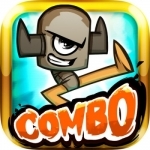
Combo Crew
Games and Entertainment
App
In a world where a fist to the face is a perfectly viable solution, Mr. Boss has it all. Now he...
Gareth von Kallenbach (980 KP) rated the PC version of Tom Clancy's Rainbow Six: Extraction in Video Games
Jan 26, 2022
The latest game in the immensely popular Rainbow Six series has arrived with Rainbow Six: Extraction.
The series features intense squad-based action as players form teams to infiltrate, extract, eliminate, and survive various missions.
Using stealth, tech, weapons, and patience; players have to find the best way to enter a location, avoid or eliminate enemies, and complete objectives while working as a cohesive unit.
This time around the enemy is a parasitic alien race and players must form three-person squads or venture through the locales solo or with a single partner.
Players will select an operative; each with a primary and secondary weapon and two tactical devices such as grenades, mines, revive shots, armor, and drones. As time goes on and players level up; new technology can be researched and used as having the right loadout is essential. Players will also have unique skilsl ranging from gun emplacements, medical, cloaking, and more which can be used in a limited situation and must be replenished as the missions unfolds.
Missions are set in three zones such as New York, San Francisco, Alaska, and more become available as players reach a certain level and naturally they become progressively harder and more intense.
Each zone has random missions and when players select a locale, difficulty level, and their operative; they will encounter missions ranging from elimination, extraction, scanning, and targeting specific strategic locales.
The enemy is very cunning and ruthless and can cloak, shape-shift, and explode amongst their myriad of hostile actions, and players must attack, evade, and work with one another to complete the missions and survive. At the end of a level; players can opt to enter an airlock and move to the next segment or return to an exfiltration zone to end the mission.
This is where the real tactics of the game come into play as health is limited as can be ammunition so players who encounter a difficult mission where they sustain damage or lose a player have to make a hard choice. Players do not die in the game as they are enveloped with a stasis foam should they sustain enough damage.
As such the remaining team must decide to carry the downed player to an Extraction Pod or leave them behind so they can carry on or they can flee to safety. This is not always an easy decision as seeing your team decimated and barely making it to safety with only a small amount of health makes even the most determined player think twice about venturing back in.
Should a player be lost; their experience is deducted from the player and will remain deducted until the character is rescued on a future mission. Seeing your roster of skilled Operatives reduced to a couple of unproven newbies is very humbling and thankfully the maps are very detailed and engaging as players will get very used to playing in the locales frequently before new areas are made available to them.
The action of the game is intense as players can use stealth or run and gun depending on the mission and the variety of enemies and missions is good.
I do wish the Quick Play would allow players to select the skill level they would like to play in and that there was a server list to select from; that being said; at $39.99 and available on Game Pass; Rainbow Six Extraction is a great deal as the cross-play enabled game ensures plenty of players to venture into danger with but like the best games of the series; having the right group of players is essential as I have lost many players due to wild cards not following mission objectives.
Intense, engaging, and deeply entertaining; Rainbow Six Extraction delivers even if it does differ from what fans have come to expect.
4 stars out of 5
The series features intense squad-based action as players form teams to infiltrate, extract, eliminate, and survive various missions.
Using stealth, tech, weapons, and patience; players have to find the best way to enter a location, avoid or eliminate enemies, and complete objectives while working as a cohesive unit.
This time around the enemy is a parasitic alien race and players must form three-person squads or venture through the locales solo or with a single partner.
Players will select an operative; each with a primary and secondary weapon and two tactical devices such as grenades, mines, revive shots, armor, and drones. As time goes on and players level up; new technology can be researched and used as having the right loadout is essential. Players will also have unique skilsl ranging from gun emplacements, medical, cloaking, and more which can be used in a limited situation and must be replenished as the missions unfolds.
Missions are set in three zones such as New York, San Francisco, Alaska, and more become available as players reach a certain level and naturally they become progressively harder and more intense.
Each zone has random missions and when players select a locale, difficulty level, and their operative; they will encounter missions ranging from elimination, extraction, scanning, and targeting specific strategic locales.
The enemy is very cunning and ruthless and can cloak, shape-shift, and explode amongst their myriad of hostile actions, and players must attack, evade, and work with one another to complete the missions and survive. At the end of a level; players can opt to enter an airlock and move to the next segment or return to an exfiltration zone to end the mission.
This is where the real tactics of the game come into play as health is limited as can be ammunition so players who encounter a difficult mission where they sustain damage or lose a player have to make a hard choice. Players do not die in the game as they are enveloped with a stasis foam should they sustain enough damage.
As such the remaining team must decide to carry the downed player to an Extraction Pod or leave them behind so they can carry on or they can flee to safety. This is not always an easy decision as seeing your team decimated and barely making it to safety with only a small amount of health makes even the most determined player think twice about venturing back in.
Should a player be lost; their experience is deducted from the player and will remain deducted until the character is rescued on a future mission. Seeing your roster of skilled Operatives reduced to a couple of unproven newbies is very humbling and thankfully the maps are very detailed and engaging as players will get very used to playing in the locales frequently before new areas are made available to them.
The action of the game is intense as players can use stealth or run and gun depending on the mission and the variety of enemies and missions is good.
I do wish the Quick Play would allow players to select the skill level they would like to play in and that there was a server list to select from; that being said; at $39.99 and available on Game Pass; Rainbow Six Extraction is a great deal as the cross-play enabled game ensures plenty of players to venture into danger with but like the best games of the series; having the right group of players is essential as I have lost many players due to wild cards not following mission objectives.
Intense, engaging, and deeply entertaining; Rainbow Six Extraction delivers even if it does differ from what fans have come to expect.
4 stars out of 5
Gareth von Kallenbach (980 KP) rated the PC version of Diablo IV in Video Games
Jun 22, 2023
The latest entry in the phenomenally popular Diablo series has arrived with the release of Diablo IV and with it comes the lofty expectations of a rabid fan base for the franchise. Players can play as one of various classes including Sorcerer, Barbarian, Rogue, Necromancer, and Druid, each comes with its own unique abilities such as sorcery, speed and dexterity, and brute force.
I chose to play as a barbarian as I am not a huge fan of resource gathering, crafting, or playing in a support role, and preferred to mix it up close quarters taking as many enemies as I can with me before I go down in a blaze of glory.
As players gain experience they will be able to increase their abilities many of which can be deployed on a timed basis and grow increasingly powerful as players level up. Players will also be able to obtain armor, weapons, charms, and more along the way which can be recycled, sold, or crafted into various upgrades in the numerous towns and communities throughout the vast map of the game.
Players will be able to complete the main quests and side quests along the way which will gain experience upon successful completion as well as defeating enemies in combat. The sheer distance between objectives can be daunting especially when the map is not clearly shown for a specific area as players may sometimes have to go a considerable distance one-way just be able to detour back toward their intended destination.
Thankfully various locales do have vast travel options that once discovered and unlocked allow players to travel between locales quickly. Being able to leave a dungeon to return to a community in order to sell gear, upgrade weapons and armor, and obtain necessary items before returning from the locale they originated from, is a key to survival.
In time I was able to obtain a horse that not only allows me to travel quicker between locales but prevented enemy mobs from attacking me so later in the campaign, I was able to focus on objectives more than dealing with unending waves combat while trying to travel between locales.
Players will encounter other players along the way and the game does have a social factor that allows for friends and players in the local area to be invited to campaign with you. This is a bit of a challenge at first as I found many players were power leveling and did not want to become involved with lower-level players.
While I completed much of the game solo, there were various bosses that I simply couldn’t handle alone, and was very grateful when I was able to obtain help. This changed when I reached higher levels as being able to complete the final campaign with three helpers made a challenging endeavor very enjoyable.
The map of the world is highly detailed as everything from towns, dungeons, villages, and supernatural realms are crafted in incredible detail and the vast number of enemies and their varieties is impressive even if at times frustrating as you have to battle your way through seemingly unending mobs to reach your destination.
Upon completing the game I will be venturing back from time to time to complete side quests and better prepare for the likely future content that will be coming down the line. While it is been popular some players and local community boards have been vocal about criticism for the game which I believe has varied from nitpicking to valid but I can honestly say I enjoyed this game significantly more than Diablo 3 and for me, Diablo IV is one of the best releases of the year and has been an enjoyable gaming experience throughout despite some frustrations along the way.
4.5 stars out of 5
Share this:
I chose to play as a barbarian as I am not a huge fan of resource gathering, crafting, or playing in a support role, and preferred to mix it up close quarters taking as many enemies as I can with me before I go down in a blaze of glory.
As players gain experience they will be able to increase their abilities many of which can be deployed on a timed basis and grow increasingly powerful as players level up. Players will also be able to obtain armor, weapons, charms, and more along the way which can be recycled, sold, or crafted into various upgrades in the numerous towns and communities throughout the vast map of the game.
Players will be able to complete the main quests and side quests along the way which will gain experience upon successful completion as well as defeating enemies in combat. The sheer distance between objectives can be daunting especially when the map is not clearly shown for a specific area as players may sometimes have to go a considerable distance one-way just be able to detour back toward their intended destination.
Thankfully various locales do have vast travel options that once discovered and unlocked allow players to travel between locales quickly. Being able to leave a dungeon to return to a community in order to sell gear, upgrade weapons and armor, and obtain necessary items before returning from the locale they originated from, is a key to survival.
In time I was able to obtain a horse that not only allows me to travel quicker between locales but prevented enemy mobs from attacking me so later in the campaign, I was able to focus on objectives more than dealing with unending waves combat while trying to travel between locales.
Players will encounter other players along the way and the game does have a social factor that allows for friends and players in the local area to be invited to campaign with you. This is a bit of a challenge at first as I found many players were power leveling and did not want to become involved with lower-level players.
While I completed much of the game solo, there were various bosses that I simply couldn’t handle alone, and was very grateful when I was able to obtain help. This changed when I reached higher levels as being able to complete the final campaign with three helpers made a challenging endeavor very enjoyable.
The map of the world is highly detailed as everything from towns, dungeons, villages, and supernatural realms are crafted in incredible detail and the vast number of enemies and their varieties is impressive even if at times frustrating as you have to battle your way through seemingly unending mobs to reach your destination.
Upon completing the game I will be venturing back from time to time to complete side quests and better prepare for the likely future content that will be coming down the line. While it is been popular some players and local community boards have been vocal about criticism for the game which I believe has varied from nitpicking to valid but I can honestly say I enjoyed this game significantly more than Diablo 3 and for me, Diablo IV is one of the best releases of the year and has been an enjoyable gaming experience throughout despite some frustrations along the way.
4.5 stars out of 5
Share this:
